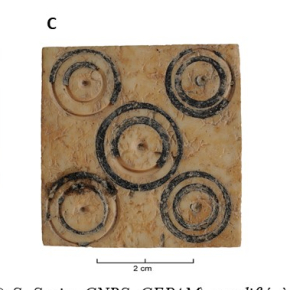
World’s oldest glue used from prehistoric times till the days of the Gauls
Birch bark tar, the oldest glue in the world, was in use for at least 50,000 years, from the Palaeolithic Period up until the time of the Gauls. Made by heating birch bark, it served as an adhesive for hafting tools and decorating objects. Scientists mistakenly thought it had been abandoned in western Europe at the end of the Iron Age (800–25 BC) and replaced by conifer resins, around which a full-fledged industry developed during the Roman period. But by studying artefacts that date back to the first six centuries AD through the lens of chemistry, archaeology, and textual analysis, researchers1
from the CNRS, Université Nice Sophia Antipolis / Université Côte d’Azur, and Inrap have discovered birch tar was being used right up to late antiquity, if not longer. The artefacts in question—found in a region where birch is scarce, thus raising the question of how it was procured—are testimony to the strength of tradition among the Gauls. The scientists’ findings are published in Antiquity (13 November 2019).

- 1. The research team is affiliated with the Cultures et Environnements Préhistoire, Antiquité, Moyen Âge (CEPAM) research laboratory (CNRS / Université Nice Sophia Antipolis).
Birch bark tar in the Roman world: the persistence of an ancient craft tradition? M. Regert, I. Rodet-Belarbi, A. Mazuy, G. Le Dantec, R. M. Dessì, S. Le Briz, A. Henry, M. Rageot. Antiquity, le 13 novembre 2019. DOI : https://doi.org/10.15184/aqy.2019.167


